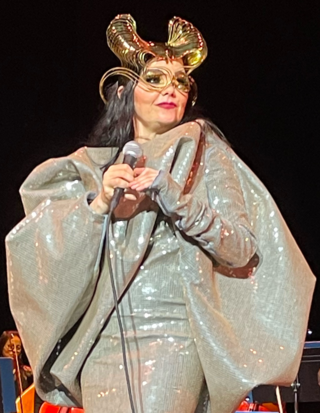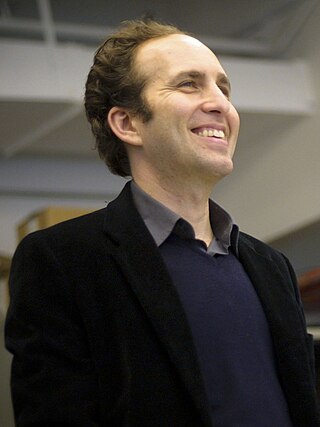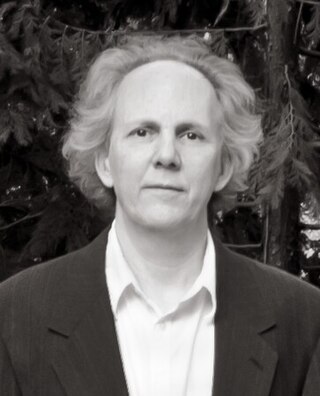Related Research Articles

The discography of Icelandic singer-songwriter Björk consists of ten studio albums, two soundtrack albums, one compilation album, six remix albums, seven live albums, four box sets, three collaboration albums, forty-five singles, ten promotional singles and eight remixes series.

WEHI, previously known as the Walter and Eliza Hall Institute of Medical Research, and as the Walter and Eliza Hall Institute, is Australia's oldest medical research institute. Sir Frank Macfarlane Burnet, who won the Nobel Prize in 1960 for his work in immunology, was director from 1944 to 1965. Burnet developed the ideas of clonal selection and acquired immune tolerance. Later, Professor Donald Metcalf discovered and characterised colony-stimulating factors. As of 2015, the institute hosted more than 750 researchers who work to understand, prevent and treat diseases including blood, breast and ovarian cancers; inflammatory diseases (autoimmunity) such as rheumatoid arthritis, type 1 diabetes and coeliac disease; and infectious diseases such as malaria, HIV and hepatitis B and C.
Jacques Francis Albert Pierre Miller AC FRS FAA is a French-Australian research scientist. He is known for having discovered the function of the thymus and for the identification of mammalian species of the two major subsets of lymphocytes and their function.
ACMI, formerly the Australian Centre for the Moving Image, is Australia's national museum of screen culture including film, television, videogames, digital culture and art. ACMI was established in 2002 and is based at Federation Square in Melbourne, Victoria.

Faculty of Medicine, Dentistry and Health Sciences is the largest faculty of University of Melbourne, with the most post-graduate students, and also hosts the most school departments and centres of all University of Melbourne Faculties, consisting of 52 faculty sub-organisations. In 2021, Melbourne Medical School was ranked 25th in the world and second in Australia in the 2021 QS Subject Rankings.

Alfred Gottschalk was a German biochemist who was a leading authority in glycoprotein research. During his career he wrote 216 research papers and reviews, and four

Scott Snibbe is an interactive media artist, author, entrepreneur, and meditation instructor who hosts the Skeptic's Path to Enlightenment meditation podcast. His first book, How to Train a Happy Mind, was released in 2024. Snibbe has collaborated with other artists and musicians, including Björk on her interactive "app album" Biophilia that was acquired by New York's MoMA as the first downloadable app in the museum's collection. Between 2000 and 2013 he founded several companies, including Eyegroove, which was acquired by Facebook in 2016. Early in his career, Snibbe was one of the developers of After Effects.
Suzanne Cory is an Australian molecular biologist. She has worked on the genetics of the immune system and cancer and has lobbied her country to invest in science. She is married to fellow scientist Jerry Adams, also a WEHI scientist.

Terence Paul "Terry" Speed, FAA FRS is an Australian statistician. A senior principal research scientist at the Walter and Eliza Hall Institute of Medical Research, he is known for his contributions to the analysis of variance and bioinformatics, and in particular to the analysis of microarray data.
Sir Colin York Syme was an Australian lawyer, businessman, technological innovator, and medical research administrator. He was noted as Chairman of BHP for nineteen years (1952–1971), and President of the Walter and Eliza Hall Institute of Medical Research for seventeen years (1961–1978).

Björk Guðmundsdóttir, known mononymously as Björk, is an Icelandic singer, songwriter, composer, record producer, and actress. Noted for her distinct voice, three-octave vocal range, and eccentric public persona, she has developed an eclectic musical style over a career spanning four decades, drawing on electronica, pop, dance, trip hop, jazz, and avant-garde music. She is one of the most influential pioneers in electronic and experimental music.

Douglas James Hilton is an Australian molecular biologist. He is the CEO of CSIRO and immediate past Director of the Walter and Eliza Hall Institute of Medical Research in Melbourne, Australia. His research has focused on cytokines, signal transduction pathways and the regulation of blood cell formation (hematopoiesis). Hilton was the President of the Association of the Australian Medical Research Institutes (AAMRI) from 2014-16.

Biophilia is the seventh studio album by Icelandic singer Björk. It was released on 5 October 2011 by One Little Indian Records and distributed by Nonesuch Records in North America and by Universal Music Group in the rest of the world. Björk composed it as a concept album during the 2008–2011 Icelandic financial crisis, exploring the links between nature, music and technology. Billed as the first "app album", Biophilia is a multimedia project released alongside a series of apps linking the album's themes to musicology concepts. It was followed by a series of educational workshops on four continents.
"Mutual Core" is a song recorded by Icelandic singer Björk for her seventh studio album Biophilia (2011). It was written and produced by Björk herself, while programming and beats were made in collaboration with Matthew Herbert and the English dubstep band 16bit. "Mutual Core" is an uptempo experimental song. Its music includes Pipe organ, electronica-tinged sounds and features the Choir Graduale Nobili, the choir featured on Biophilia. The song's lyrics are a metaphor for human relationships, compared to the structure of the Earth and Plate tectonics. The song was well received by contemporary music critics, who praised its production and beats, moreover appreciating Björk's voice on the track.

Stephen Anthony Malinowski is an American composer, pianist, educator, software engineer, and inventor. He was born on August 6, 1953, in Santa Monica, California.

The Biophilia tour was the seventh concert tour by Icelandic musician Björk. The tour was centered on her multimedia project and studio album Biophilia (2011). The tour premiered at the Manchester International Festival and visited Europe, Americas, Asia, including her first visit to Taiwan, and featured the first performance in Africa.

Björk was an exhibition at the Museum of Modern Art (MoMA) in New York City about the Icelandic singer of the same name. Exhibited at MoMA from March 8 to June 7, 2015, Björk was a "retrospective" showing comprising audio, video, fashion, instruments, and other objects pertaining to her career.

"Lionsong" is the second song by Icelandic singer and musician Björk from her eighth studio album, Vulnicura. It was written and composed by Björk and features beats by Venezuelan musician Arca, who co-produced the track with her.
David James Kemp was an Australian plant geneticist and parasitologist.
Alan Frederick Cowman AC, FRS, FAA, CorrFRSE, FAAHMS, FASP, FASM is an internationally acclaimed malaria researcher whose work specialises in researching the malaria-causing parasite, Plasmodium falciparum, and the molecular mechanisms it uses to evade host responses and antimalarial drugs. As of May 2024, he is the deputy directory and Laboratory Head of the Walter and Eliza Hall Institute of Medical Research (WEHI) in Melbourne, and his laboratory continues to work on understanding how Plasmodium falciparum, infects humans and causes disease. He was elected as a fellow of the Royal Society in 2011 and awarded the Companion of the Order of Australia in 2019 for his "eminent service to the biological sciences, notably to molecular parasitology, to medical research and scientific education, and as a mentor."
References
- ↑ "Author: Drew Berry". Interalia Magazine. 2014. Retrieved 11 July 2019.
- ↑ Drew Berry by Colin Martin, The Lancet, Volume 377, Issue 9769, Page 895 12 March 2011
- ↑ WEHI.TV Animations
- ↑ Swing Science by Paul Goldberger, The New Yorker 1 December 2008
- ↑ American Scientist, Science Observer: Molecular Movie Stars September–October 2009 Volume 97, Number 5 Page: 382
- ↑ Where Cinema and Biology Meet 15 November 2010.
- ↑ Drew Berry's Bio-Animations Dazed Digital Dazed & Confused August 2011 Issue
- ↑ Twisted tale of the double helix 29 February 2004
- ↑ Animations for the multi-media project, DNA, author Drew Berry, wins Emmy Award 23 September 2005.
- ↑ 2006 Science and Engineering Visualization Challenge winners announced 21 September 2006
- ↑ Niche Prize winners announced 16 July 2008
- ↑ Revolutionary Minds: The Interpreters: Drew Berry- illuminated manuscripts April 2009.
- ↑ 2010 MacArthur Fellows: Drew Berry
- ↑ "Six new honorary doctors". liu.se. Retrieved 23 January 2023.
- ↑ "SIGGRAPH 2003, San Diego, Electronic Theater". Archived from the original on 8 October 2012. Retrieved 30 May 2011.
- ↑ About WEHI.TV Archived 19 May 2011 at the Wayback Machine
- ↑ About WEHI.TV Archived 19 May 2011 at the Wayback Machine
- ↑ Drew Berry- Body Code, Australian Centre for the Moving Image "Drew berry". Archived from the original on 8 April 2011. Retrieved 30 May 2011. 2003
- ↑ "MoMA Film Exhibitions: Premieres November 21, 2004 – January 31, 2005"
- ↑ The Nature Machine Media Kit, Queensland Art Gallery Archived 27 July 2011 at the Wayback Machine
- ↑ About WEHI.TV Archived 19 May 2011 at the Wayback Machine
- ↑ "Strange Attractors: Exhibiting Artists". Archived from the original on 8 April 2011. Retrieved 30 May 2011.
- ↑ About WEHI.TV Archived 19 May 2011 at the Wayback Machine
- ↑ New York Times- 'The Day the Earth Stood Still' production credits
- ↑ "Culture dish". Nature. 454 (7202): 279. July 2008. Bibcode:2008Natur.454..279.. doi: 10.1038/454279b . ISSN 1476-4687. S2CID 4427663.
- ↑ In Science and Jazz, Father and Son Find Common Bonds Archived 19 January 2014 at the Wayback Machine 9 June 2009
- ↑ About WEHI.TV Archived 19 May 2011 at the Wayback Machine
- ↑ "Project - Culturetech". www.culturetech.biz. Retrieved 22 January 2023.
- ↑ Imagine Science Films: Fighting Infection By Clonal Selection "Fighting Infection by Clonal Selection". Archived from the original on 22 July 2011. Retrieved 30 May 2011. 18 October 2010
- ↑ "TEDxCaltech speakers". Archived from the original on 20 April 2011. Retrieved 30 May 2011.
- ↑ TEDxSydney speakers Archived 16 July 2011 at the Wayback Machine
- ↑ "Hollow" music video by Björk + Drew Berry (wehi.tv), 2010, 18 July 2020, retrieved 23 January 2023
- ↑ björk: biophilia: hollow app tutorial, 12 January 2012, retrieved 23 January 2023
- ↑ Drew Berry's Bio-Animations Dazed Digital Dazed & Confused August 2011 Issue
- ↑ "Biomedical Animator Drew Berry to Speak at RIT Dec. 8" RIT University News 1 Dec 2011
- ↑ ""E. O. Wilson's Life on Earth: Team"". Archived from the original on 24 March 2012. Retrieved 9 March 2012.
- ↑ Virus one billion times (2014) Drew Berry wehi.tv and Franc Tétaz, 15 April 2014, retrieved 23 January 2023
- ↑ Mendel: The Legacy — The Well-Tempered Genotype. A Live Video-mapping Concert from Brno., 20 August 2015, retrieved 7 January 2023
- ↑ The Illuminarium at the Walter and Eliza Hall Institute, by Drew Berry, 28 April 2016, retrieved 22 January 2023
- ↑ Malaria Lifecycle -- no narration (2016) by Drew Berry wehi.tv, 5 April 2017, retrieved 22 January 2023
- ↑ Research, The Walter and Eliza Hall Institute of Medical (2 September 2016). "Century of medical breakthroughs celebrated at Melbourne Museum". WEHI. Retrieved 26 January 2023.
- ↑ "V&A · The Future Starts Here - Exhibition". Victoria and Albert Museum. Retrieved 7 March 2023.
- ↑ "Respiration by wehi.tv (2021) - YouTube". www.youtube.com. Retrieved 19 January 2023.
- ↑ "Respiration animation". HHMI BioInteractive. 2 October 2020. Retrieved 21 January 2023.
- ↑ "Virus one million times". Science Gallery Melbourne. 16 August 2022. Retrieved 19 January 2023.
- ↑ "Chemistry of Life". C. 13 April 2023. Retrieved 4 May 2023.